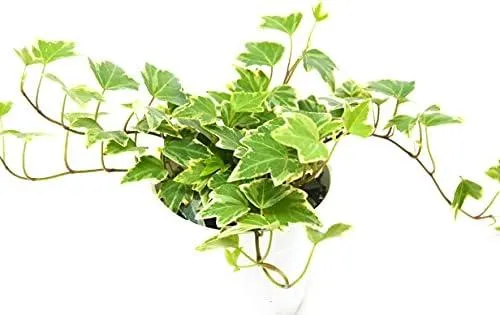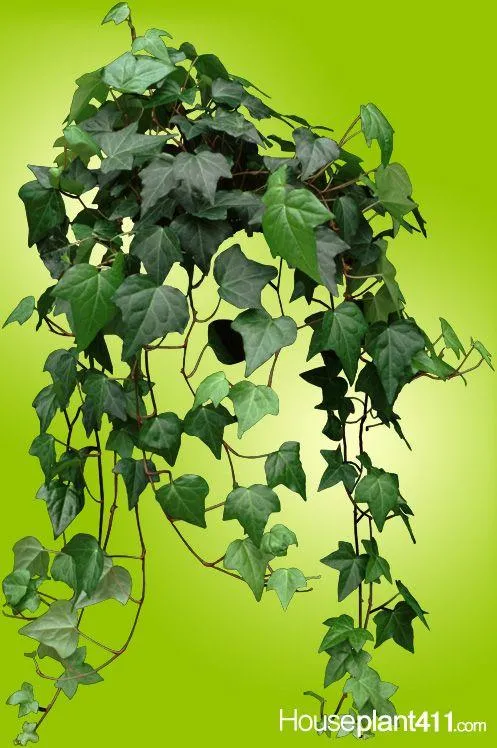
How to Grow English Ivy Indoors: A Complete Guide to Growing Ivy Plants Inside Your Home
Can You Really Grow Ivy Indoors?
One of the most commonly asked questions from plant enthusiasts is whether ivy can thrive when grown inside the home. The answer is a resounding yes! With the right care and conditions, several ivy varieties will do quite nicely potted on your windowsill or hanging from your flower pot.
Ivy Varieties Suited for Indoor Growing
- English Ivy (Hedera helix)
- Needlepoint Ivy (Hedera helix ‘Needlepoint’)
- Baltic Ivy (Hedera helix ‘Baltica’)
- Swedish Ivy (Plectranthus verticillatus)
These cultivars have thinner, smaller leaves that retain moisture well without becoming wilted or crispy. Their vines are not as aggressive as some other ivies, so they are less likely to completely take over your home. English ivy is probably the most forgiving choice for beginners since it thrives in low to moderate light.
Light Requirements
Contrary to what many believe, ivy does need some direct sunlight to grow well indoors. Aim to give your potted vine at least 4 hours of direct light each day, whether from an eastern or western-facing window. South-facing is best if possible. Indirect light the rest of the day is sufficient. Place your plant where it can get those sunbeams but avoid placing it in a west-facing window, as the scorching afternoon sun may burn the leaves.
If full sun is not available, supplement with a grow light for 6-8 hours daily. The fluorescent or LED fixtures clip nicely onto shelves or hang from ceiling hooks above your plant. From my experience, using grow lights has allowed me to successfully grow even very finicky tropical vines indoors by mimicking their natural light conditions.

Watering Needs
Ivies like moisture but don’t want soggy wet roots, so aim to water just as the top 1-2 inches of soil starts drying out. Use your finger to check for dryness, or lift the pot which will feel noticeably lighter when thirsty. During spring and summer, water every 5-7 days. Cut back to every 10-14 days in fall and winter as growth slows.
It’s easy to overwater plants grown inside where humidity is lower. To prevent root rot, only water when the soil starts drying rather than following a strict schedule. Water thoroughly until it drains from the bottom of the pot. Check the soil daily to ascertain the moisture level which can vary greatly between pots in different spots of your home.
Humidity and Other Tips
Indoor air is notoriously dry during winter months, so provide humidity as needed. Set your ivy on a pebble-filled tray of water which increases ambient moisture without wetting the plant directly. You can also use a humidifier set on a timer, or boil water regularly to release steam into the air. Ivies appreciate relative humidity of 50-60%.
Fertilize monthly in spring and summer with a diluted all-purpose liquid plant food. Repot yearly into a slightly larger container using fresh potting mix. Prune woody stems to maintain a fulsome, bushy habit. Ivy leaves started turning pale? Move the plant to a sunnier spot and water only when very dry to restore vibrancy.

With the right conditions, ivy can thrive for years indoors and breathe new lush greenery into your space. So go ahead – start that ivy and let it ramble! Just water and feed it regularly and provide adequate light. Before long, you’ll basically have your own little indoor jungle to admire.
Growing Ivy Indoors
| Type of Ivy | Light Requirements | Watering | Soil |
|---|---|---|---|
| English Ivy | Medium to Bright Indirect Light | Water When Top 1 inch of Soil is Dry | Well-Draining Potting Soil |
| Swedish Ivy | Bright Indirect Light | Water Weekly | Well-Draining Potting Soil |
| Needs Plant | Bright Indirect Light | Water When Top 1 inch of Soil is Dry | Well-Draining Potting Soil |
| Creeping Fig | Medium to Bright Indirect Light | Water Weekly | Well-Draining Potting Soil |
FAQ
-
Can ivy grow indoors?
Yes, ivy can grow successfully indoors. English ivy is one of the best houseplants for indoor gardens. It thrives in low to medium light and requires minimal care.
-
What types of ivy grow well indoors?
English ivy and Swedish ivy, also called needlepoint ivy, are popular indoor varieties. Pothos ivy and Devil’s ivy can also be grown inside. At the same time, some variegated cultivars like golden ivy look basically amazing indoors.

-
What kind of light does indoor ivy need?
Most indoor ivies prosper in medium to low indirect light. English ivy sort of hates direct hot sun. Place ivy near an east, west, or south-facing window to give them adequate illumination throughout the day. The light has to be bright enough for photosynthesis without scorching their leaves, right?
-
How often should you water indoor ivy?
Water indoor ivy when the top inch or so of soil appears dry. Ivy isn’t too fussy about watering, which is awesome! Occasionally they may go a bit longer between waterings than expected. Overwatering seems to be the biggest issue many plants face indoors.
-
What kind of soil is best for indoor ivy?
A well-draining potting mix suited for common houseplants works awesomely for growing indoor ivy. The soil doesn’t need to be incredibly rich or fertile. A basic potting soil that retains moisture yet drains excess water is ideal. Maybe add some peat moss or compost to improve drainage and aeration if needed.
-
How do I care for indoor ivy in the winter?
During the winter, decrease watering a little and place ivy somewhere with sufficient light. It may need less frequent misting. Anyway, don’t let it get soggy or sit in water. Ivy seems happy with average home temperatures. But is that fair to plants native to warmer climes? Perhaps grow lights can help if light levels diminish.

-
Can indoor ivy climb or trail?
Yes indeed! English ivy grows as a climber or trailers outside, so it will scamper over objects indoors too. Train vines up a moss pole, trellis, or let it cascade over the pot edge. The stems have tiny root-like growths called “caterpillars” that allow them to attach to surfaces. It’s virtually a magical climbing machine!